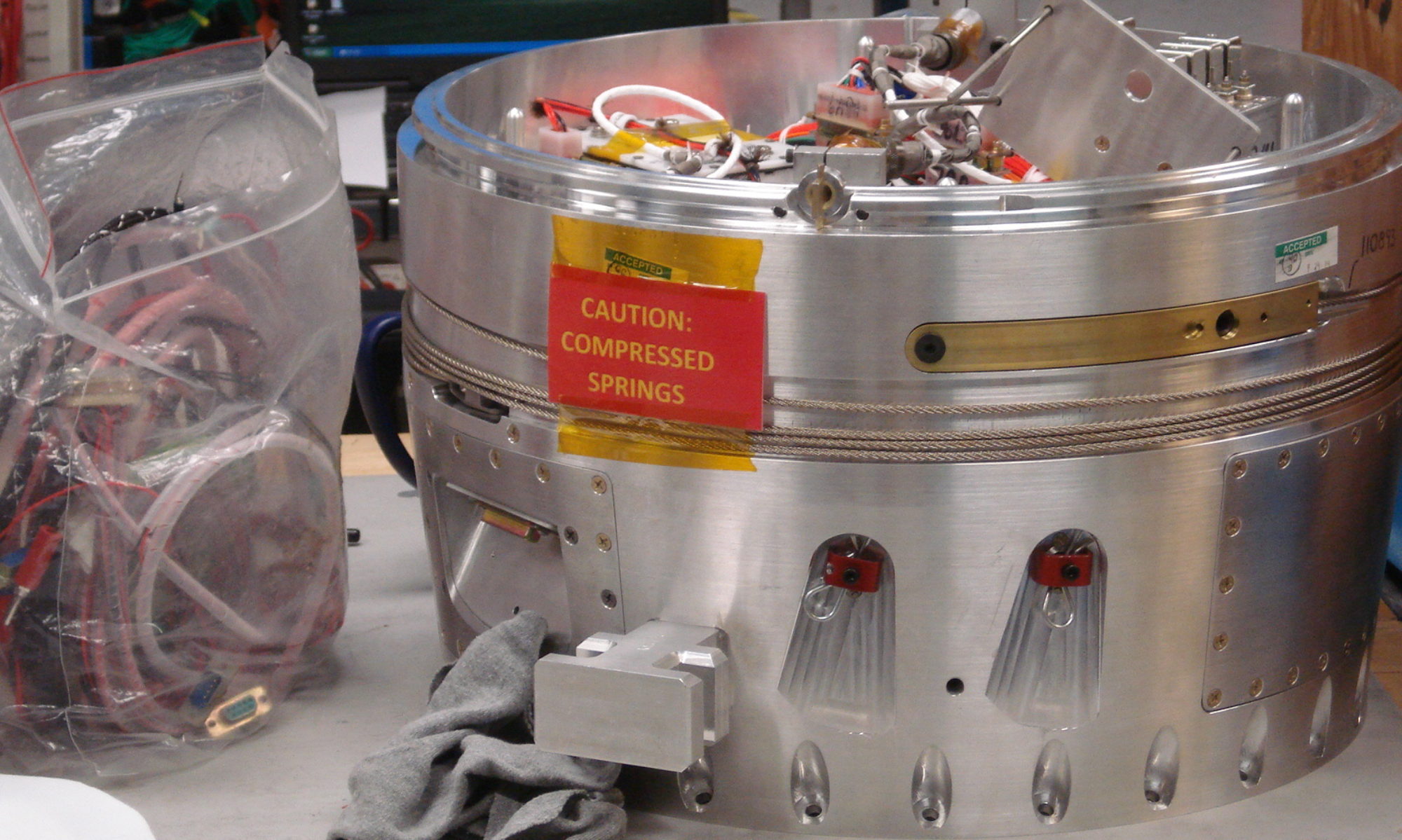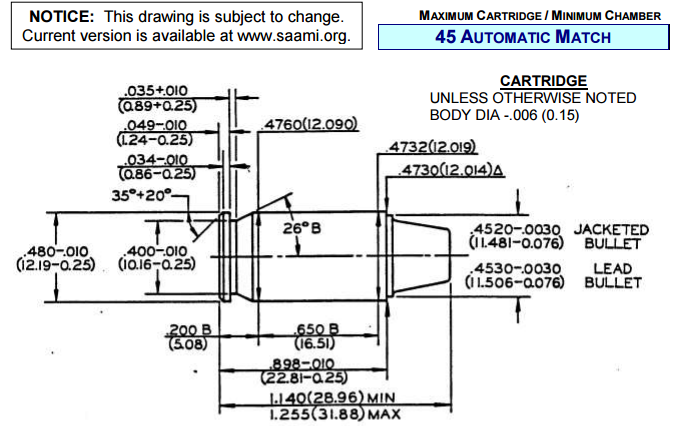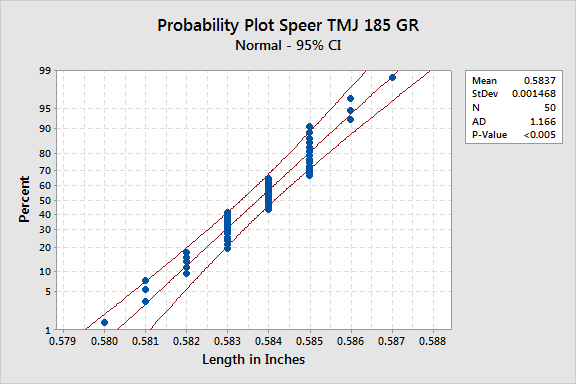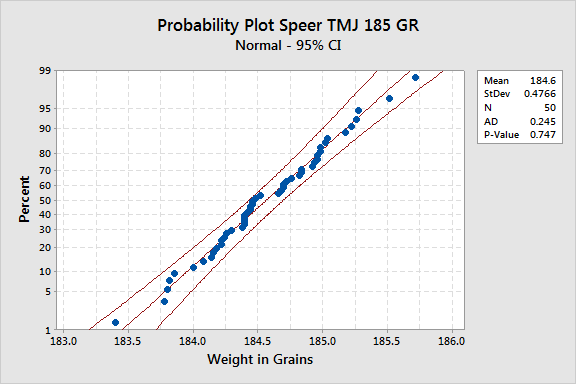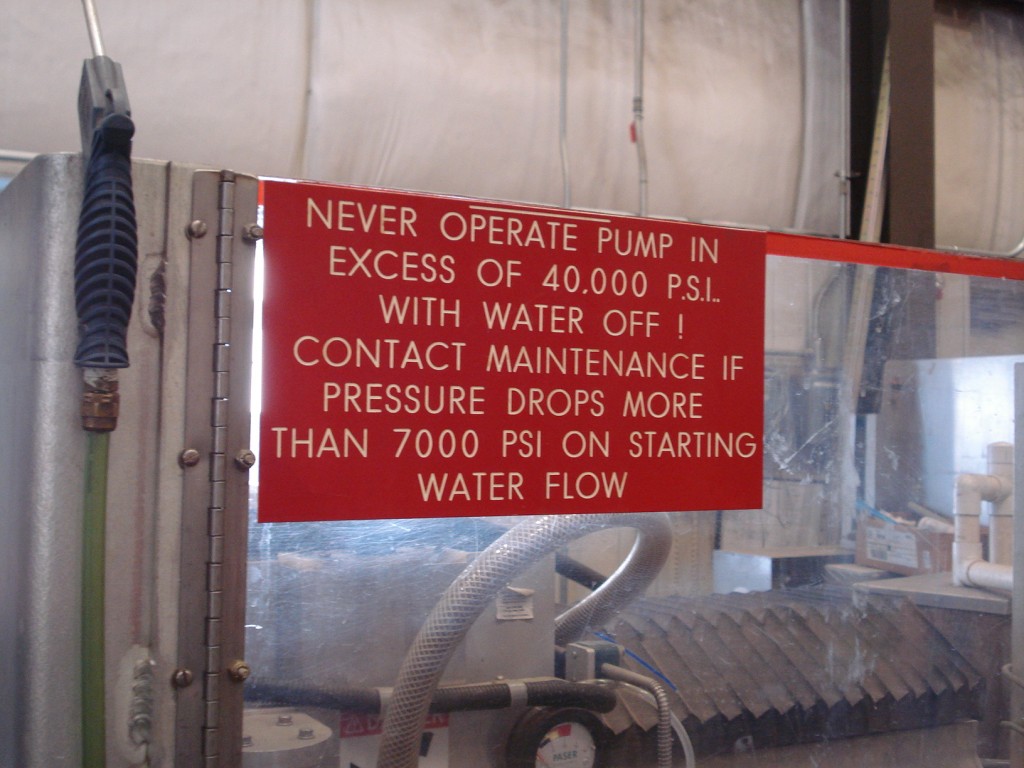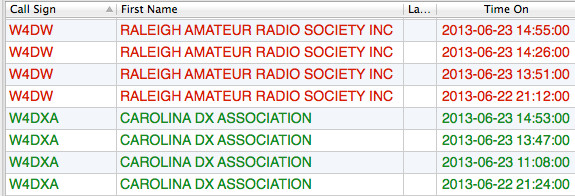Courtesy of SAAMI:
Speer TMJ 185 GR Quality Measurements
At work, I’ve been learning Six Sigma/Lean principles, and thought that my interest in reloading might be a good point where I can delve a little deeper into both what I enjoy intellectually for work and for fun, and, hopefully, learn more about what makes a quality bullet or case. Consequently, I’m documenting my efforts so that others can compare notes, generate discussion, and develop a greater understanding of this facet of reloading.
Having recently taken up bullseye, or precision pistol shooting as the NRA is now deciding to call it, like anyone new to a sport, I dug right in and started studying what has been written about reloading for this particular course of shooting. It’s a well worn field by all accounts, rife with genius and ignorance, but what bothered me most was the complete lack of data regarding what sorts of qualities one should look for in a round of match grade (meaning “target”) ammunition. Surely, I thought, the answer could just as easily be measuring a “known” match grade round and trying to replicate that. SAAMI even has a specification for 45 ACP Match ammunition- so surely there isn’t a mystery here.
Of course, it isn’t that simple. What may shoot well in one pistol may not in another, some powders may “feel” different in regards to recoil (something I don’t believe in at present), component differences between what a factory may use and what you may be able to get, and so forth. Additionally, I don’t have access to an outdoor range or independent testing mechanism like a Ransom Rest, so even if I could take all the measurements I could get my hands on, I couldn’t presently test them in any controlled way. Lastly, even if I could do a double blind controlled study and find a “magic bullet,” there are going to be days when the human factor- the skill necessary to shoot a shot deep into the black- is the limiting condition.
Nevertheless, I decided I’d start measuring bullets and cases and making the results available to all. As I revisit brands/lots, I’ll continue to expand the various data sets that I collect. If variation occurs from established, repeated measurements over time, then it may be a good reason to investigate an alternative supplier.
I recently purchased a couple boxes of Speer’s TMJ 185 gr. bullets (lot D12X, Part #4473) that I plan on using in bullseye tournaments over the course of this year. These bullets are made in the new style- instead of cup and core construction– and are instead electroplated. The accuracy of plated bullets is subject to great debate among the bullseye community, though I’m not aware of which specific brands anyone has found lacking. I can’t remember who commented on The Bullseye Forum that one could probably get away with using rocks as projectiles at the 25 yard line, so I’m guessing the complaints about plated bullets has something to do with the 50 yard performance- but who, when, and evidence of them not performing haven’t been demonstrated to my knowledge with any sort of test results such as with photos, target, and load data to back up the claim that plated bullets don’t work well.
Diameter:
Measurements taken were weight, length, and diameter (in that order). I found very quickly that I was unable to discern any diameter difference- it’s entirely possible that there is a difference that a micrometer could tell, but the calipers I was using all turned up measurements of .451 inch in diameter. This makes a certain sense; the constraint on a bullet isn’t weight or length- we speak about bullets in terms of their caliber, which is what will determine practical weight and length for a given projectile (assuming sufficient rifling and other necessary conditions).
Length:
You’ll note that the length of N measured is evenly spaced; I only have resolution to .001 inch. My measurement system is such that if I took a measurement and the needle was between graduations that I made a judgement call; if it was past what I considered a half space, I rounded the size up. If the tick was below the half space, I rounded down. I didn’t have to do that frequently, but I do want it noted.
The data are evenly distributed and have a low standard deviation, however, the data is not normally distributed; as I noted above, the data does have some semblance of continuous measurements, but it was categorized for ease of reporting, as the alternative is to get more resolution, which seems unfruitful.
Weight:
The data is normally distributed which is indicated from the high P-value (the null hypothesis in this case was that the bullet weight would be normally distributed; thus, the null cannot be rejected). This is also evident from the trend of the samples to tend towards the center, or mean, of the graph. There are a couple of straggler data points on either end, which could be an indicator of either an improper measurement on my part (bias), or that the bullet was in fact the weight recorded.
The weight plot above indicates that, if my scale is to be believed, the majority of bullets are in fact underweight. Interestingly, the standard deviation from the mean is just enough weight to get many samples “over the hump,” assuming that it was a positive value, of course.
Relationship Between Weight vs Length:
A regression analysis indicates a strong relationship between bullet weight and bullet length. Remembering that we are fundamentally constrained by diameter (caliber), one would reasonably conclude that in order to increase weight, one must either use a different material or increase the amount of mass present; which in this case would be length. The model is explained to a high degree of confidence, statistically speaking.
Conclusion:
The bullets appear to be very well made and to very tight tolerances, even though in general they are underweight. How they will shoot remains to be seen, but there is nothing in the data to suggest that, if loaded properly and within a narrow velocity tolerance, any particular physical property would present non-nominal performance.
Measurement Tools:
Brown & Sharpe Dial Micrometer/Frankford Arsenal DS-750 Scale
Wallops Returns to Flight!
After the previous loss, you know this launch’s success has to feel good for the entire Wallops team:
You can read more from Space.com here.
Antares Launch and the #NASASocial Experience
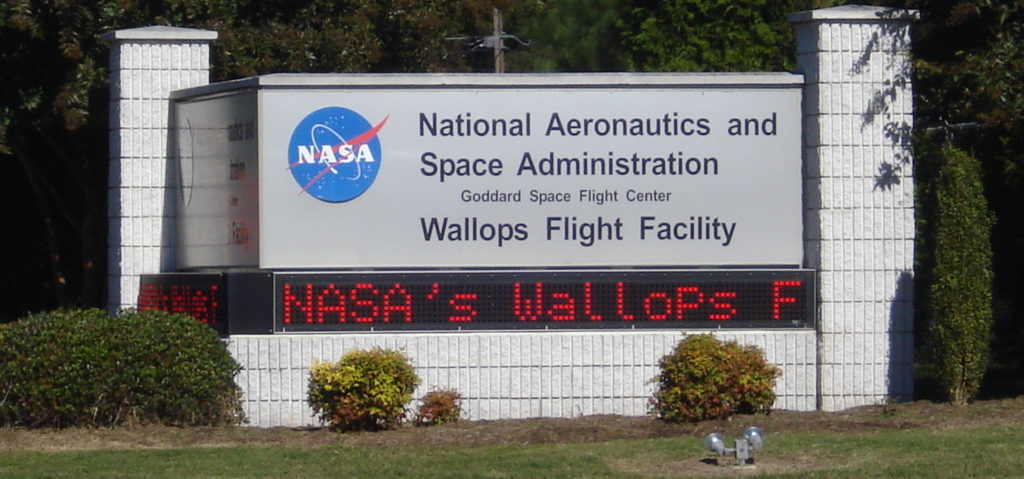
For those unfamiliar, NASA has a non-traditional media program that invites various social media users for a vast multitude of events- rocket launches being the primary interest of many, though there have been other events as well- notably getting to watch a rocket’s “hot” or test fire in the desert of Utah. I applied to view a launch in Virginia thinking I had no chance whatsoever of being selected. I don’t have a high post count here, nor do I engage with social media sites very much. However, the fates went my way and I got invited to be a social media commentator for the first Antares night launch from the Wallops Flight Facility, which is operated by the Goddard Space Flight Center, near the end of October 2014.
The flight from Atlanta to Norfolk takes about 2 hours. I took a night flight into ORF. As the plane began its decent, we turned around and could see the black mass of the ocean on one side and the incredible lighted area of Chesapeake Bay and the Norfolk Naval Station, home to the Atlantic Fleet. I could see the serpentine Chesapeake Bay Bridge, the absence of certain parts indicating which sections were undersea tunnels so that the fleet can come and go as it pleases.
After staying the night in Norfolk, I made the drive up to Wallops from Norfolk using the Bay Bridge. The trip up was uneventful and mainly as expected- the highway along the coastline was dotted with many businesses which had already shuttered as the summer season was over and so, too, were the opportunities to make money from the tourists.
Along the way, I stopped at a Wal-Mart, conveniently placed to take advantage of the coastal traffic, to get some snacks because I wasn’t sure what sorts of provisions would be available for the remainder of the day, and picked up my first bag of Utz Crab Chips, which I found to be quite wonderful.
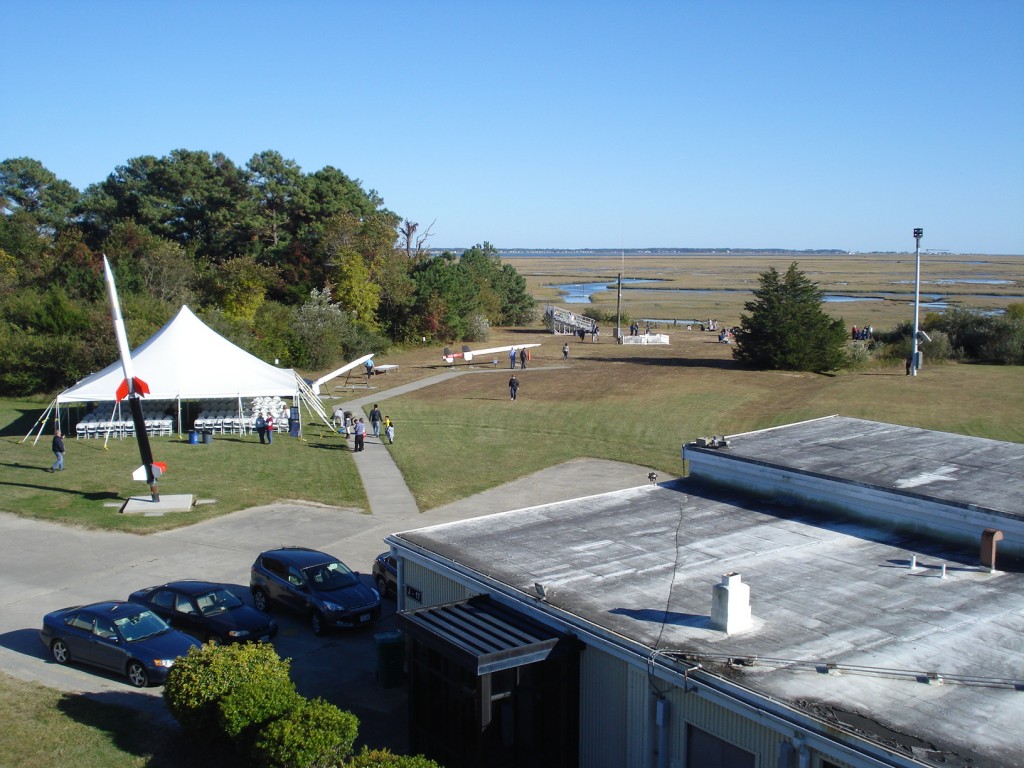
After arriving at the Wallops Visitor Center, which was to be the waypoint between the tours and activities among the facilities, all of the #NASAsocial invitees gathered together for sign-in and welcoming. Jason Townsend was our lead for the entire event, and was assisted by various team members. After what seemed like a whirlwind of meeting folks and getting somewhat oriented, it was time for the pre-launch meeting and press question and answer session, which was going to be broadcast on NASA TV. Just by the nature of these events, which are not reliant on national news media or other similarly sized and resourced organizations, the crowd was enough to fill the viewing room of the visitor’s center and the show, as they say, got on the road. It was light chatter, with some interesting characters from much larger NASA/Space watching sorts of blogs taking up the first couple of rows- while I did wonder if the folks doing the reporting for their blogs actually made any money at it, I was also simultaneously struck by the vulgarity of such a thought.
After our press briefing, which was close to an hour in length, we all piled up into busses to take a trip out to launch area, which has been photographed by NASA HQ, and you can view the photos here. They are really much better than the photos I collected, though I was pleased with this particular snap:
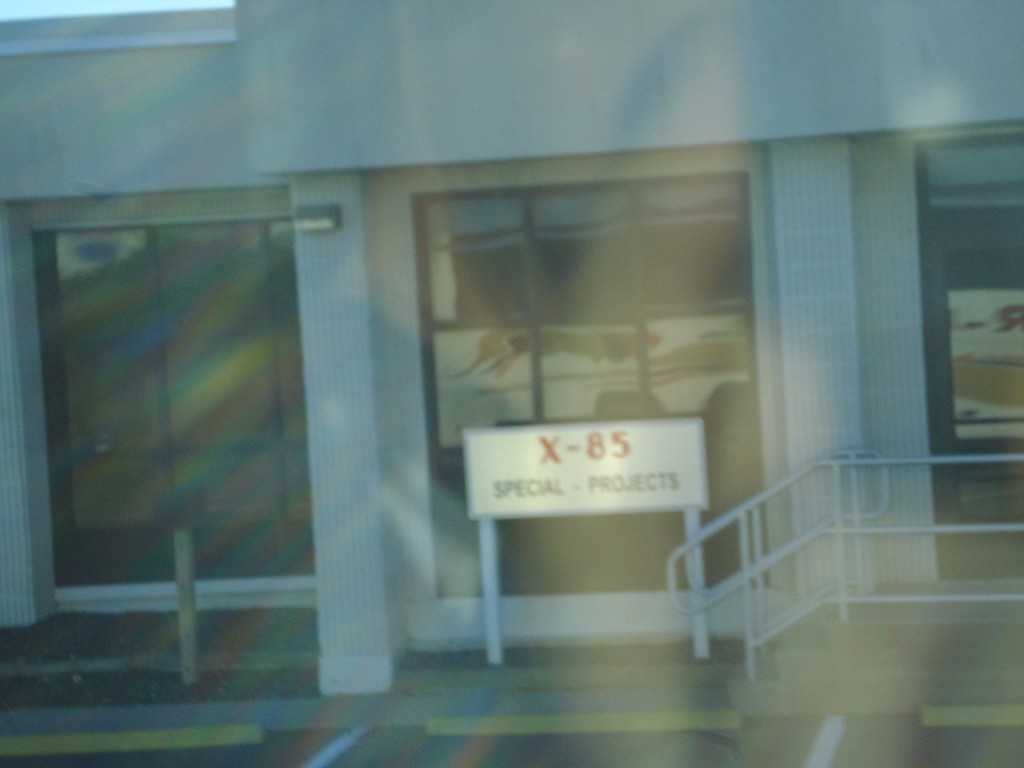
It was a pretty uneventful showing- the wind was blowing quite a bit and there was a bit of a chill coming in the air. The people we met from Orbital and that were in charge of the Antares launch of the “Orb 3” Mission were polite, cordial, and were somewhat alarmed when I asked whether the reorganization of Alliant Techsystems into the new Orbital Sciences Corporation was going to have any bearing on future launches in terms of cost savings, earnings per share, and other sorts of business metrics. They immediately had one of their very professional PR people come over and speak to me directly, as they probably didn’t want to get off message, in addition to trying to get a handle on who this particular rube was and why was he asking these sorts of questions.
I read the papers and just happened to be well informed, is all. This did eventually lead to a discussion the next day with a rocket motor guy and the history of Thiokol, DuPont reloading powders, and hunting in his home state of Utah. I think we get an idea that these people who are in charge of these various systems of the world at large are somehow separate and distinct from the rest of us; and that just isn’t true. Everyone I met from ATK/Orbital and from NASA were incredibly professional- but also approachable.
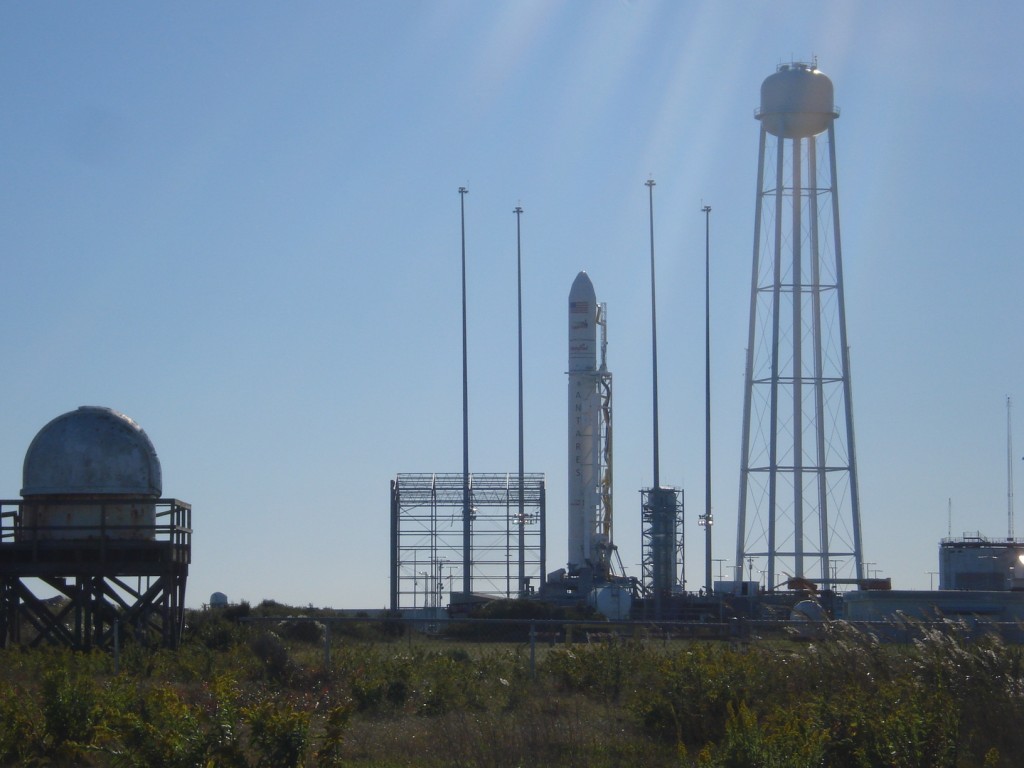
After the “close as we can let people who don’t have security clearances get to the launch pad to take photos and ask questions,” we got back onto the busses and headed back to the visitor center to disperse for the evening.
Across the street was a NOAA installation, noted by the large antennas- a favorite view of mine, I have to say!
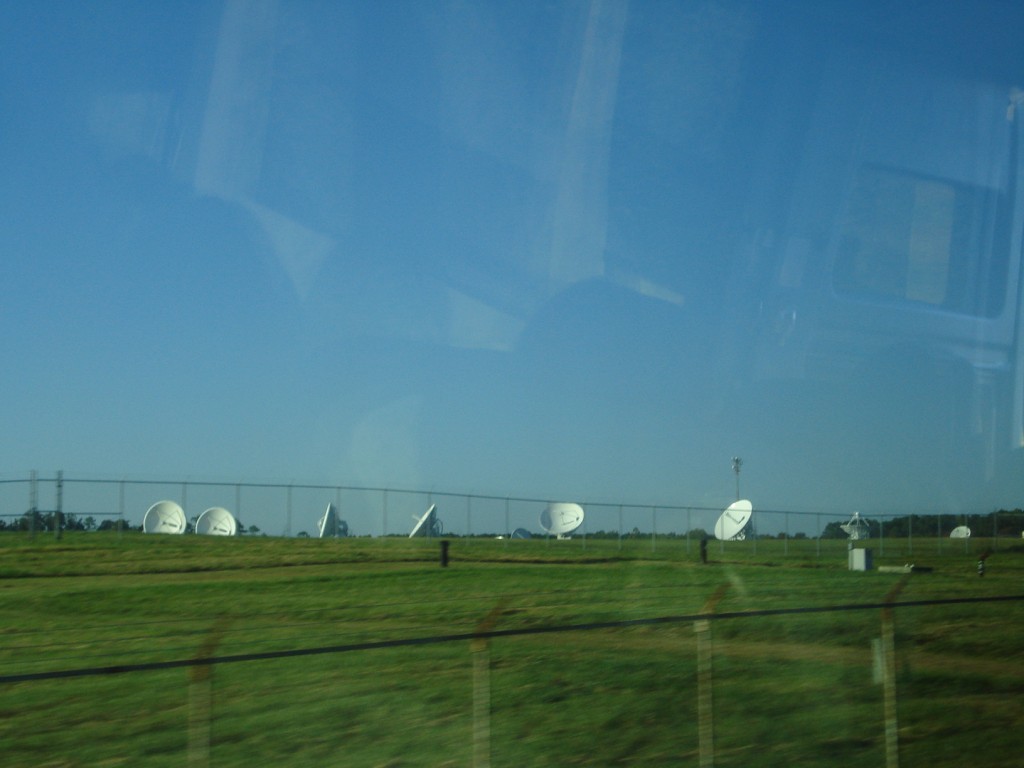
The stay on Chincoteague was pleasant enough. I ate at Famous Pizza; I skipped the pizza and had a flounder sandwich with cocktail sauce- delish! They had Tool playing in the kitchen, so I knew I was at the right place.
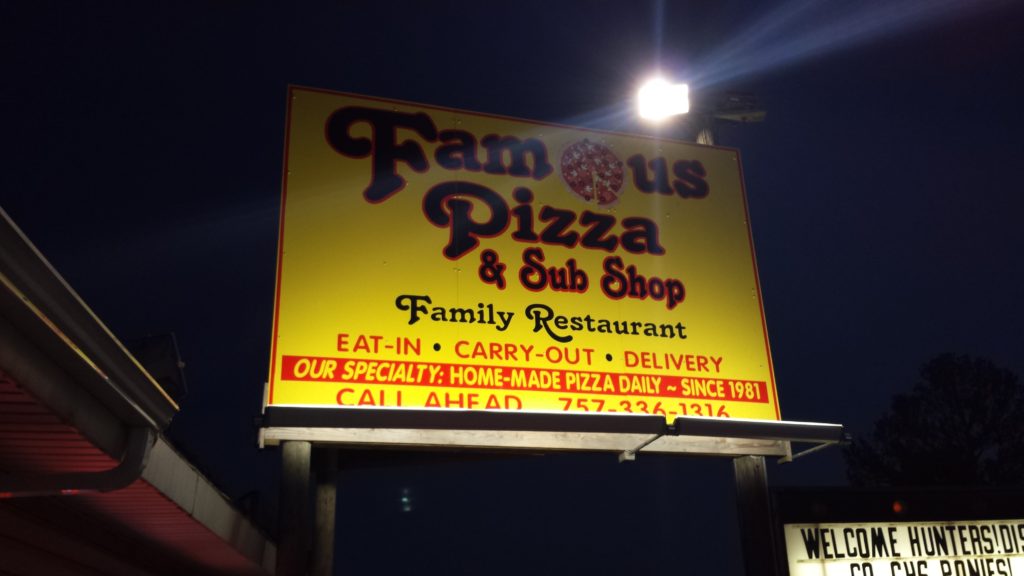
The hotel left a bit to be desired- I couldn’t quite figure out why there were so many black flies swarming about in the room, until I looked it up. How anyone visits such a place as a summer retreat with so many flies is beyond me- I’m used to the low bug count of the Redneck Riviera, I suppose. That is my only complaint, but the place is covered in flies and it is in a marshland, so not sure how germane the comment is.
I got up for the day’s events- it was a real marathon- we basically ran from place to place on the installation to visit the different facilities and hoping to maintain our schedule. I could have spent a week in each department we visited. Instead, #NASASocial only got about an hour or so per place- not including bus transport between different facilities- and it just wasn’t long enough. I only later learned that there were supposed to be 50 attendees, but due to the launch being rescheduled, we only retained 20 or so of the 50 (moved from Fri/Sat to Sun/Mon).
I can’t imagine what it would have been like with a full compliment of NASASocialites. I think our group was just the right size, even though I didn’t mingle with all of them (especially the younger, more boisterous narcissist types- very “me” focused). They have their own sort of way of approaching this world that doesn’t suit me. The older and more settled, professional crowd was more my speed. However, you have to give a bow to the NASA Social HQ people for selecting a very different, diverse, and hodge-podge group of people to attend the launch. There are many different crowds and audiences that could potentially be reached from this social media coverage. For instance, my followers, and who I follow, vary tremendously. From my Twitter amateur radio people, Google + local group and my Facebook friends- everyone from who I’ve taught to who has taught me. It’s a varied audience and I’m sure that everyone else (and even those who were not) who was selected for this event probably had just as many varied audience members, too. It’s quite likely that this is part of the selection criteria to be included in a #NASASocial event in the first place.
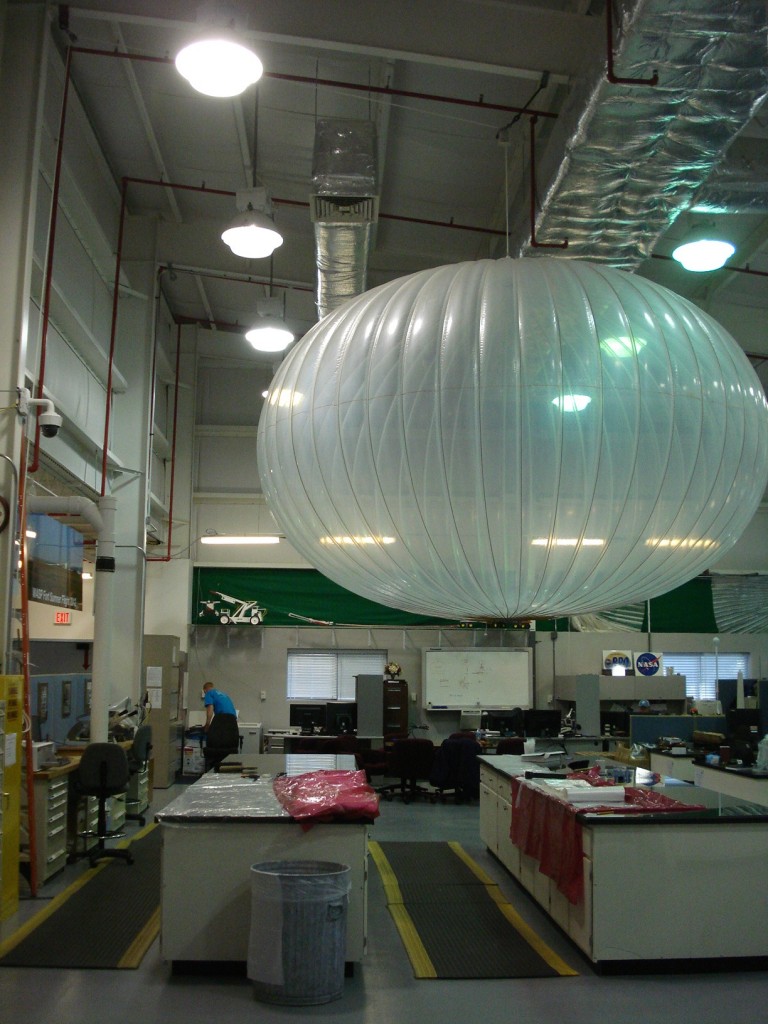
Some tour! Our first stop was with the balloon lab. There was discussion about the shortage of helium and that when it gets too expensive, they will/may have to switch back to the more dangerous hydrogen for fuel. The various materials they had on hand to construct the balloons varied in size; the largest the balloonists had built contained the approximate volume of the Astrodome.
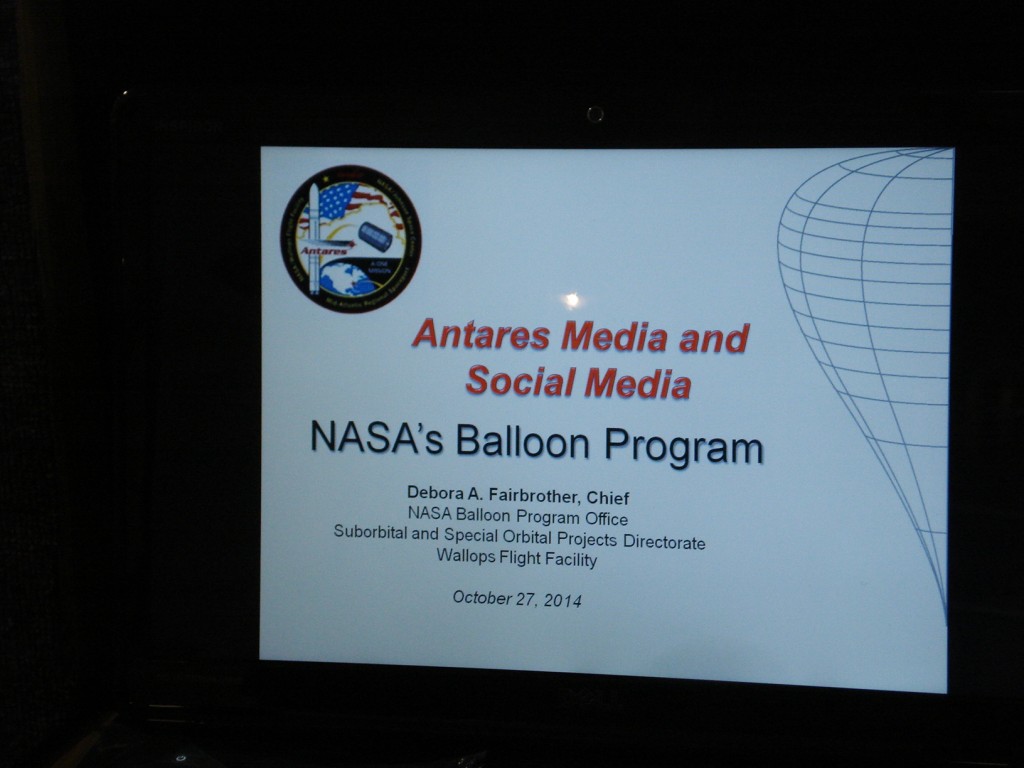
The lab itself was full of all sorts of things. Wall racks with giant rolls of Mylar and polyethelene just waiting for use.
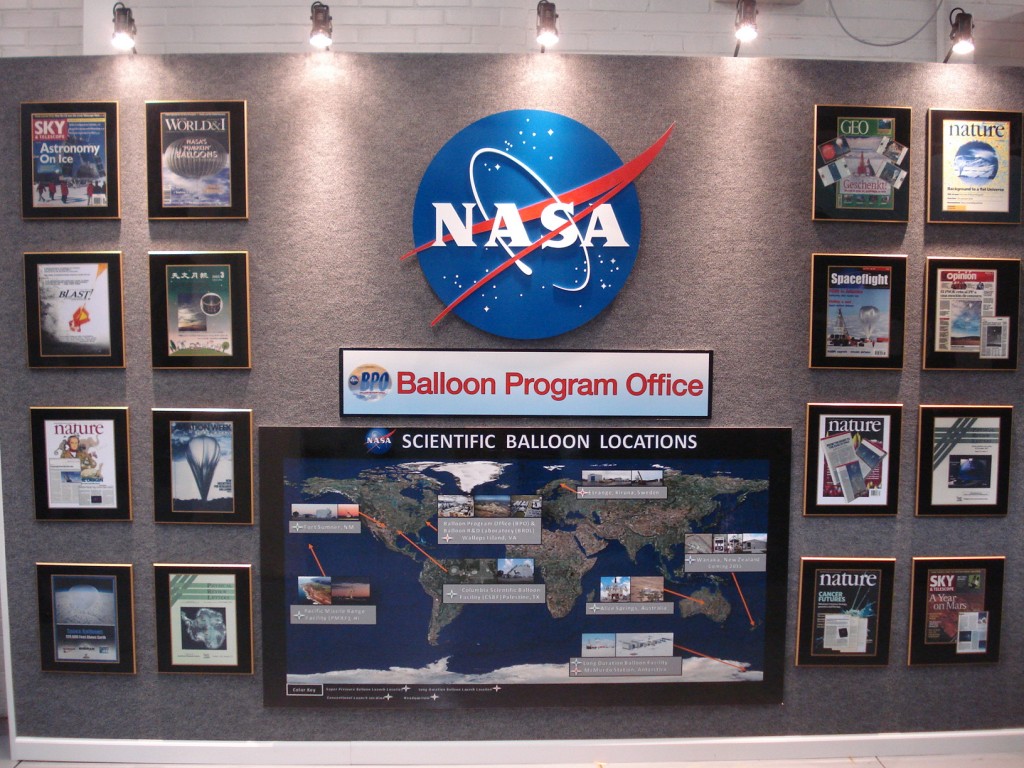
Oddly, none of us asked how the balloons are constructed. It’s obviously more involved than giving a 3rd grader a hot glue gun, some popsicle sticks, and yarn. But construction details weren’t mentioned once and I can’t believe it didn’t occur to me to ask.
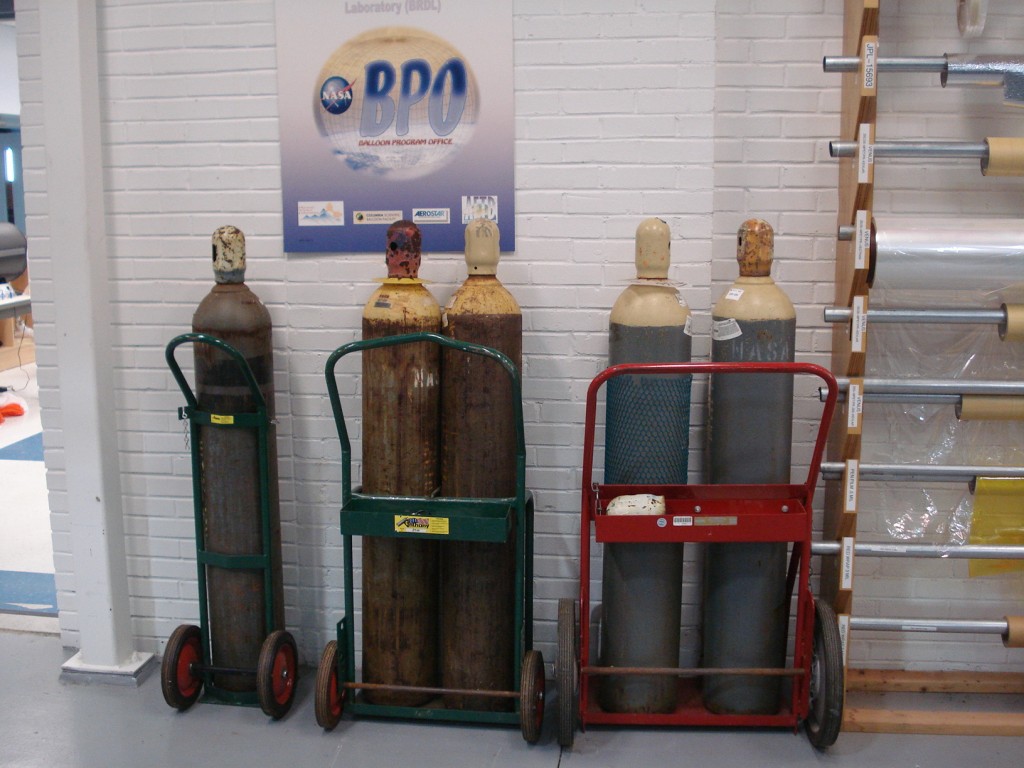
We took a look through the rest of the, well, I’m calling it balloon factory, and we went past various testing chambers, one of which was an anechoic one, no doubt to test the various electronics packages that fly aboard the different balloons. There are multiple balloon launch sites.
After getting our fill of balloons, we moved to the Sounding Rocket Foundry. I simply can’t do it justice- they perform nearly everything from raw machining to final assembly of these sub-orbital rockets. 2015 was the 70th Anniversary for Wallops, which has launched over 16,000 rockets; the name “Wallops” comes from an early English surgeon who owned much of the land in the region.
The shop checks for rocket deflection, does a BEND test, and has a giant shaker table. Sounding rockets are violent creatures- there is a lot of work that goes into the payloads, of course, but those won’t matter if they can’t get to orbit. Imagine having your tires balanced on your car- that’s, sort of, what these fine folks are basically doing. I did notice the high number of blue lab coats, which I asked about. They are used for ESD protection. Or, if it is chilly in the room.
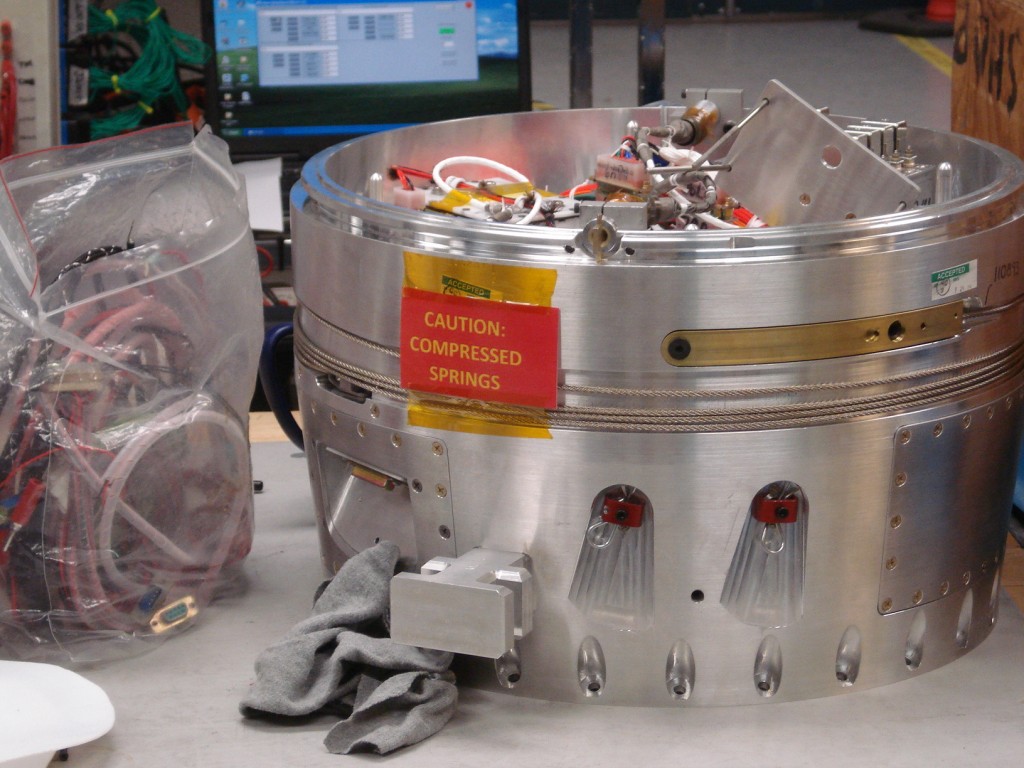
We also found out that, much like leaving a light on in a theatre to keep the evil in the dark, you don’t use the word “explode,” when you are discussing the combustion forces at work in a rocket motor. You instead say, “it makes fire.”
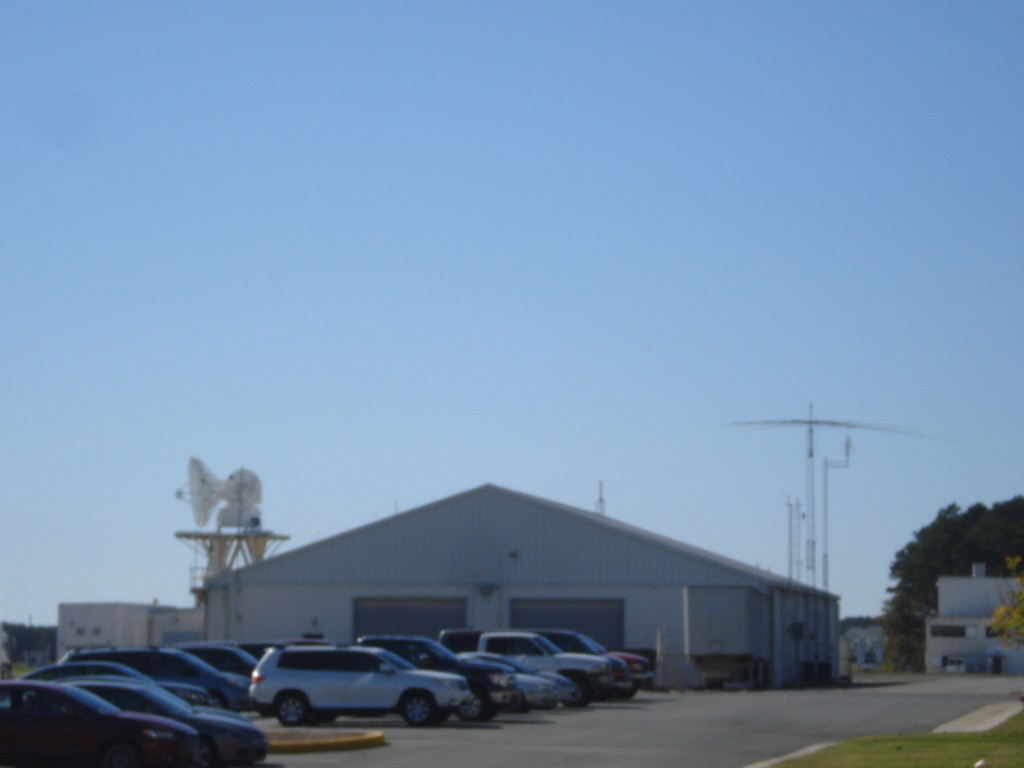
The last stop of the day before the launch was a tour of the launch command and control. It reminds one of everything we see in the media- the trenches of monitors, people running pre-flight checks, following the step by step guide that takes nearly a day or so to get through. When you are sending a rocket up- you better get everything as right as you can.
I did learn during this part of the tour that the NASA logo was affectionally called “The Meatball.”
After this last jaunt, we headed back to the visitors center, and got geared up for the night launch. Sadly, I missed it, along with everyone else. There was some boat in the downrange launch area that couldn’t be moved out of the area in time to meet the launch window. I couldn’t stay- I headed back to Atlanta on the earliest flight out the next day.
And in maybe some way, I was lucky. The next evening, the rocket had an anomalous event during launch which ended with the rocket’s destruction, along with major damage to the launch pad and associated facilities.
The #NASAsocial people who were able to stay were evacuated away, along with the other VIPs from a launch viewing area around two miles away from the launch pad. Eventually, Orbital decided that there was a defect in the rocket engine itself and have moved away from that supplier to another.
I had a wonderful time, even though I didn’t get to view the launch directly. I would encourage anyone who is interested in NASA and space in general to keep an eye out for a #NASAsocial event near you- it’s worth the trip!
AMSAT/ARRL Social Media Failure Antares Launch
Please note: in what follows, you are reading a partially fleshed out manuscript based upon experiences from nearly a year ago in regards to how the ARRL and AMSAT deal with “cub reporters,” “bloggers,” and other non-traditional media sources- I had been selected as a #NASASocial guest for the Antares Orb-3 launch at Wallops Flight Facility and was trying both to find something to link the launch to my amateur radio hobby and space nerds such as myself in general. Next month’s post will be an in depth review of that overall experience- without any focus on the groups that inspired me to sign up in the first place.
It’s entirely possible that the ARRL and AMSAT have changed their behavior in the meantime (sadly, this story will probably be sort of like Joe Taylor, sycophants et al., and his beloved WSJT- if it wasn’t invented in his mind, it can’t be worth much unless he can ride your superior coding coattails- see the recent K9AN stuff in the wsjtdevel group) but it is incredibly unlikely any change has happened at all. Sean Kutzko, KX9X, had been recently promoted (Spring/Summer 2014 or so) to deal with media requests and has continued to do a very poor professional job in handling them- yet he somehow seems quite able to announce his own DXpeditions on relevant community mailing lists. AMSAT is nearly dead, sad to say, and while it doesn’t give me any joy to throw sand upon that already dug grave, I think it is prudent to mention how cliquish, silly and irrelevant they’ve become. Wonder when AMSAT will be absorbed by ARRL?
—…— —…— —…—
10/29/14
I happen to think that the ARRL and AMSAT get most things right, if better late than never. But in this case, they both failed me.
A week before I was to leave for the launch, I emailed Kay Craige, ARRL President, requesting help about whom I should speak to in regards to any questions the ARRL might like asked and how to include any facet of amateur radio-just to keep the subject alive in present day science. And like the very class act she is, she responded with the greatest alacrity. She directed me to Sean Kutzko (ARRL) and Barry Baines (AMSAT) as sources for information on any relevant amateur radio interest that might be encompassed by the launch. Unfortunately, neither Sean nor Barry responded to my pre-flight checklist on my way out to the launch, and Sean did not respond to any emails during or after the launch. Looking back, there is the ARRL response and the AMSAT one that I would like to describe- I’ll take them in that order.
After the Antares launch failure, it came as a shock to me that the ARRL released a statement regarding the amateur radio satellite payload that had been on the manifest to be launched- especially considering I had previously asked if one was aboard, who could I speak to about it, I was going there as a #NASASocial guest and would do anything to help report, ask questions, make friends, and so forth about just such an endeavor. I’m not an expert, but it seems to me that the ARRL ignored me- and Sean Kutzko, KX9X, in particular. I had emailed him both at his professional and personal email address to seek help on anything QST might like to cover, anyone he might know who’d be there, anyone who might have a story to tell, anyone who might have a ham radio connection at Wallops, any pictures they might like, and so on. And then, when it proved beneficial to the ARRL’s relevance, the ARRL released what knowledge they did have regarding the launch in order to appear in the know. It seems to be the case that the ARRL knew there were payloads aboard; but Sean couldn’t simply lift a finger to help. Predatory journalism or business as usual? You be the judge.
AMSAT was a bit better- after I complained on Twitter the night before the scrubbed first launch attempt, Barry finally did email me back in a rather condescending way and gave the usual excuse(s) that he had simply missed the email- it was only because one of the more connected leadership actually saw and acted on the negative tweet. How a president of an organization of 3K people (or put another way- so few people), or however many they have, can simply miss an email is incredibly strange to me. In the fair spirit of not reposting his very weak answer (but you know, if his wife, his boss or his friends had emailed him, he would have had some sort of response, it seems reasonable to believe) for all to see, just please take it on faith that his response was, at best, only a placating response at his failure to have any information with which I could work with in my travels. That much was beneficial, I think- it isn’t clear to me that either of these organizations knows what is going on day to day, but rather, that they know what is going on when some sort of catastrophe happens. Barry did say that he didn’t know of any amateur radio sats going up on this payload- so it looks like the ARRL scooped him here. How much longer will it be until AMSAT folds into the ARRL? The Fox program is probably their last, due to lack of membership dues and funding. I mean, if they don’t know what’s going up on the rockets that did contain amateur gear, is it reasonable to expect they will for any other but their own? If not, why not? The answer is money, and they seem to be running out of it because the membership keeps dropping. I can only wonder why- it couldn’t be a lack of response from leadership, perhaps?
To drive the point home: search ARRL/AMSAT news archives for any mention of the Antares launch before it occurred- see how forward thinking they were. You’ll find the same answer I already knew- neither gave it any thought or mention until such as disaster could directly benefit them. Is that who you want to give your money to, the people who only ask for your money in a manufactured crisis?
So, sorry fellows, time for you to take your lumps for mediocre performance. Your less than helpful efforts should be noted both so you can improve and as a warning to others about your performance when it comes time for voting- no pay raises for Sean! Barry- investigate how to merge with ARRL and get Kay Craige onboard. She’s the best leader the ARRL has had in a generation- let AMSAT die and bring them on over.
ARRL Supports Creationist Group
I enjoy reading my monthly copy of QST- it may not be as deep as some would like, and for some it might be too obtuse, but I’d like to think that, over all, it’s a pretty good publication that is put out monthly for the benefit of membership.
Remind me to tell you some time why they no longer have an “Op/Ed” section and now instead call it “Personal Visions.”
In any case, I read it, cover to cover, and enjoy sending my copy to other folks who aren’t members. I recently have encountered a colleague at work who is interested in getting licensed, and so I have been giving them to him when I am done. He seems to enjoy it, too, which is probably a good sign that it is both well put together and something that is approachable by those who might have an interest in such.
That said, the columns are shrinking in word count and the adverts are increasing. We are probably getting a smaller page count magazine which has more adverts, which of course, is what helps to pay the bills. I don’t take issue with the way in which the ARRL is handling the change from a paper to digital society; but I won’t ever give up my paper copy- that is, until they cease publishing them.
One of my favorite parts is reading the classifieds. I don’t know why that is or why I’m drawn to it. It has the usual litany of people advertising their wares, though there is the occasional new entry that may spark my interest. One of those I’ve recently seen is along the same lines of the scam that WB2JKJ runs about donating used radios to be, well, who knows what, really? But this particular one, Ham Radio Kids, is more pernicious, because it appears to have all the hallmarks of the same sort of scam- donate equipment and money for children!- but in this case, it isn’t clear that it’s just to line the pockets of the organizers (which may or may not really be true of WB2JKJ, but many people on QRZ suspect that is what he is really doing), rather, it is an organization that would like to promote creationism in the classroom.
I don’t know how a science and technologically minded organization such as the ARRL can in good faith accept advertising dollars from an organization which does not wish to teach science, but instead wishes to teach dogma that passes for thinking critically about the world in which we live. There is an undercurrent in amateur radio today- perhaps more than just an undercurrent- that is joining the ranks- the preppers and the homeschooling, fear minded set. I, no more than anyone else, have no idea what the future holds for amateur radio; but I do know that teaching creationism, which isn’t science or technology, should not be part of the program that the ARRL should be associated with.
Vote with your dollars. When my membership is up in a couple of years, I’m going to think long and hard about renewal in an organization that would instead prefer to be a whore for such a minor sum of classified dollars and appears to turn a blind eye towards those that seemingly are charity in name only and who also gives space to a group who espouses a discredited, worthless and inaccurate view of the world.
W4A- The Battle of Atlanta Special Event Station
I’ll be the first to admit that this year’s attempt working as the W4A Special Event Station did not have nearly the same amount of QSO’s that our club did last year. Even though last year was the sesquicentennial of the Battle of Atlanta, was promoted more on our part and we worked using the call over the course of two different dates- the beginning and ending dates for the battle- I simply couldn’t overcome the logistics that other club members had already made, some that arose for me; so the body count was very low.
Just me, really.
That aside, I did my best and have sent out specially designed QSL cards for the event and have uploaded the log to LoTW. I also took the opportunity to work this event in one mode only- JT65. It was sort of an odd choice, I’ll grant you, as you can’t ordinarily count on a high number of contacts due to the length of the exchange per QSO. That said, I was pleased to turn in ~60 QSOs in about 8 hours of operating. That’s probably not a bad average, all things considered- many of the contacts were on 20 meters, with the first half or so on 40 meters for good measure. The bands were better on the second day as opposed to the first- but that’s how it goes, sometimes.
Thanks to all who worked me!
The High Holiday is Here!
Another Field Day in the books!
For all who worked N4PU, thank you! We are in the process of going through the logs and sending them up to both the ARRL and LoTW.
This year, I decided to send QSL cards to individuals we worked. If we missed you, please don’t hesitate to reach out for a card, sent direct. No SASE or Green Stamp required.
While our small club, The Southeastern Underground Radio Fellowship, only had two operators at any time, we tried our hand at working digital modes- both WSJT-X (JT65 and JT9) along with that favorite of many, CW. We had a personal best for a competition- right around 250 QSOs or so (we also worked some FB OMs on Phone, too). The bands were great to us this year, though we did not elect to work the midnight oil like many do and instead had a leisurely bit of fun.
We did manage to make a 6M CW contact with a mobile station, which is a first for us in any contest we’ve participated in! Our band/mode QSO breakdown is as follows:
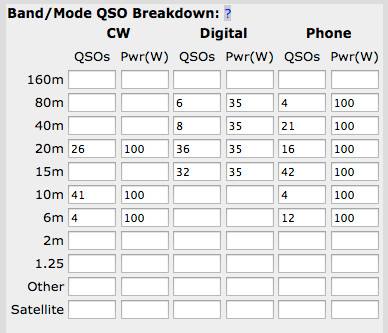
Field Day QSL Note in June 2015 QST
I think this bears repeating:
Last Field Day, I operated single operator QRP PSK31. I completed 85 contacts to 30 states. That should have given me quite a start toward the PSK31 WAS award. What is disappointing is that of all these contacts, only 10 took the time and effort to verify through Logbook of the World (LoTW). For those who are not math majors, that is a 12% rate. The by-state verification through LoTW wasn’t much better – a pitiful 23%.
What I find hard to understand is why this is, when most PSK31 programs (and many other logging programs used on Field Day) automate the logging process and produce a fiel that is quite easy to upload to LoTW. The extra effort would be most appreciated by your fellow Field Day participants who are pursuing awards.
Ted Antanaitis, WA7ZZB
I couldn’t have said it better myself. What gets me is that many of these clubs who operate during Field Day submit their log electronically to the ARRL to see how they rate among their peers- it’s not a contest, after all.
Perhaps incentivising clubs would do the trick- if you upload your log to both the ARRL and LoTW, then you could get more points. I think this is a great idea and would encourage more clubs to do the right thing and upload their contest logs which would help out people like Ted and other amateurs as well.
N4PU Log
Red=Not Confirmed.
Green=Confirmed.
Which of these two clubs would you choose to work?
Any club with “INC” in the name probably isn’t a club. Is there any excuse for any modern club to simply not upload their Field Day logs to LoTW? W4DW is a Special Service Club, after all, so shouldn’t they go above and beyond? The Southeastern Underground Radio Fellowship QSL’s 100% and even sometimes 200%. You can bet W4DW submitted a log for the contest, er, Field Day.
